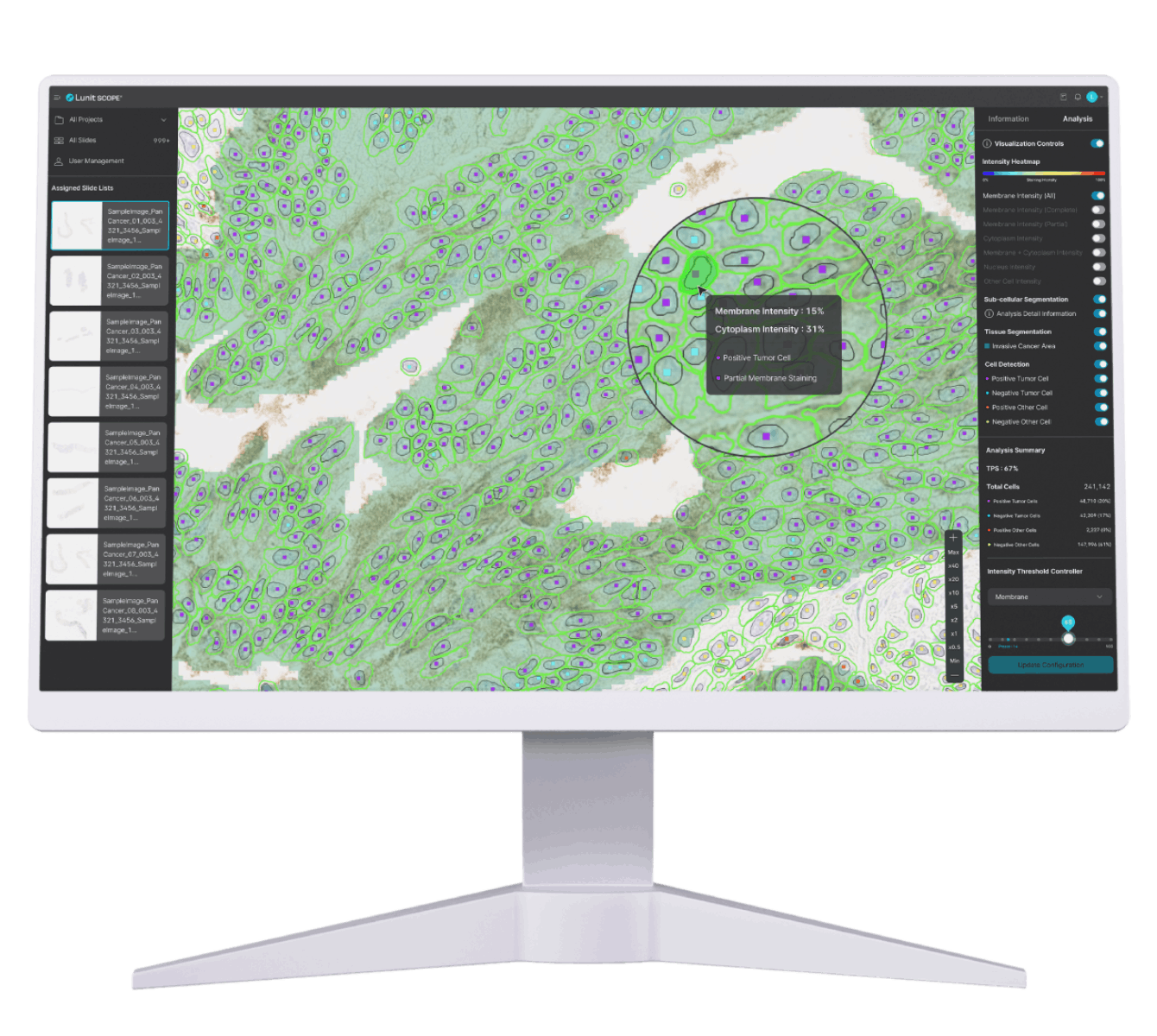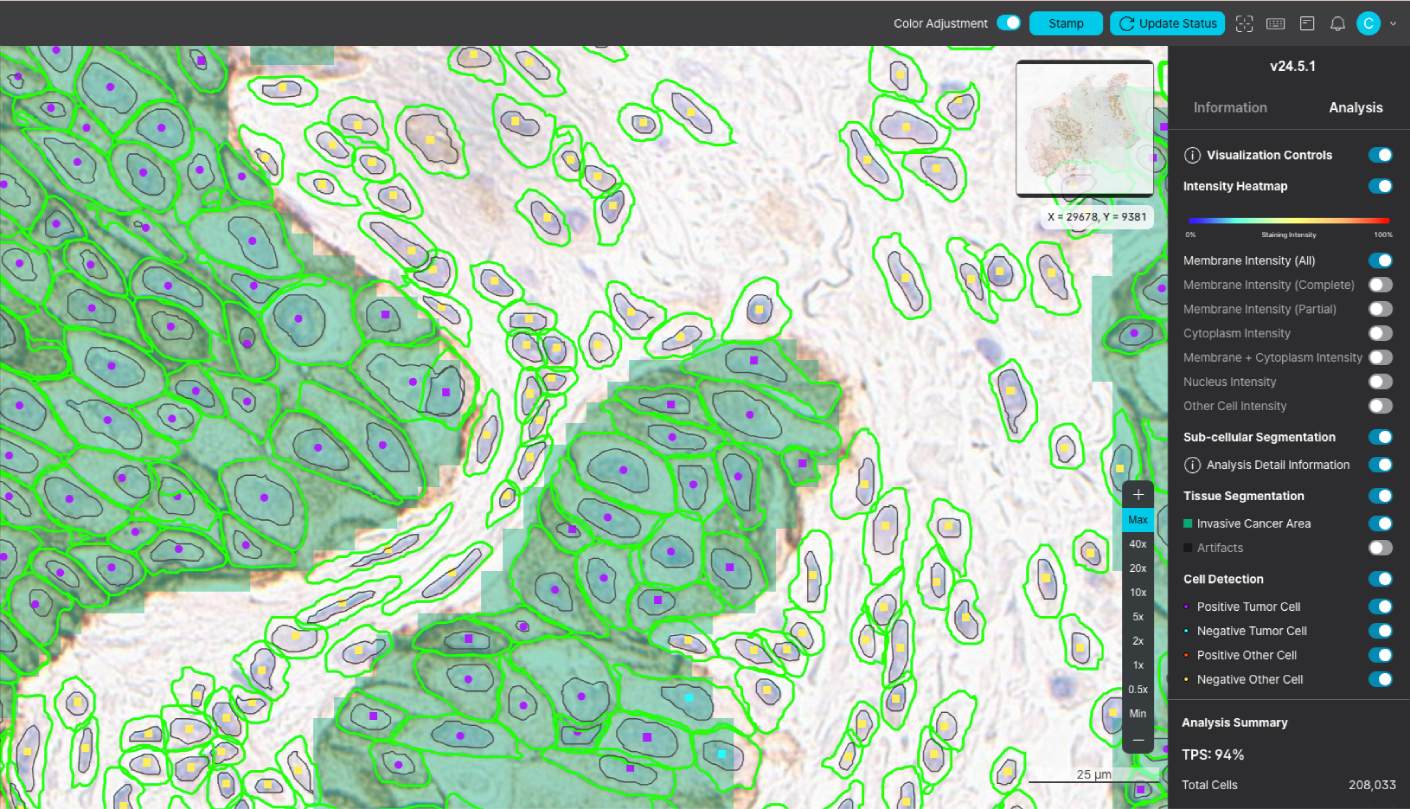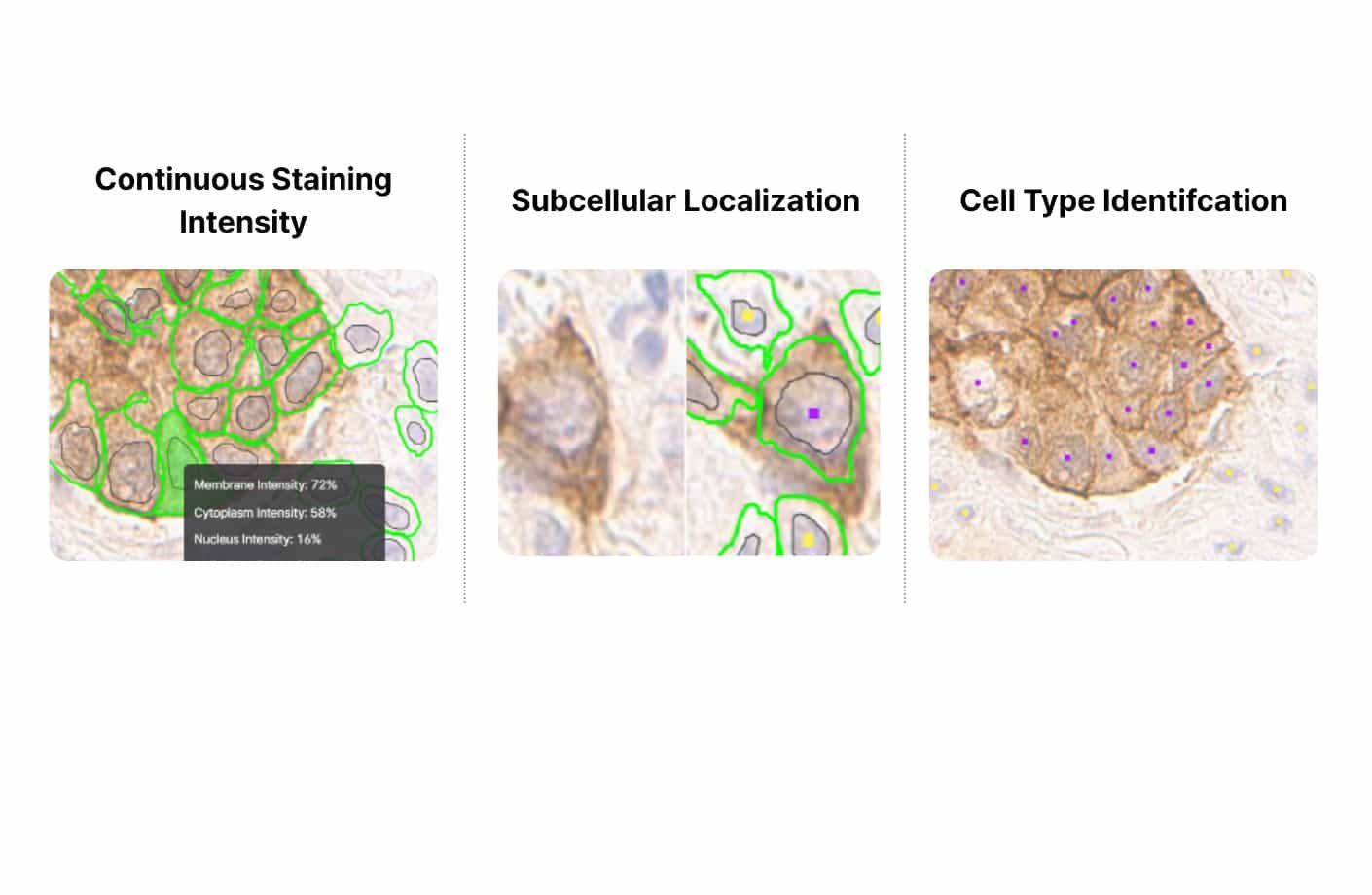
Lunit SCOPE uIHC is an AI-powered digital pathology image analysis software designed to streamline IHC biomarker analysis across various cancer types.
Trained on over 18 IHC stains spanning 20+ primary tumor origins, it supports CDx development for next-gen biomarkers, reveals drug target insights with high membrane and tumor specificity, and drives translational research.




Stay informed with the latest research, product updates, and global partnerships driving innovation in AI-powered precision oncology.
Explore white papers, product guides, and educational tools designed to help you get the most from Lunit’s AI-powered oncology solutions.
